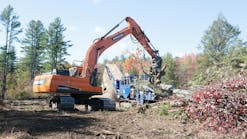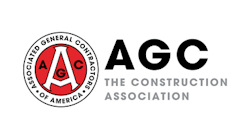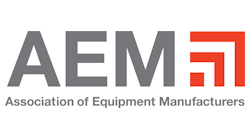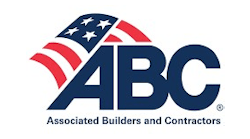Large construction companies that have construction projects dotted throughout North America generally engage equipment-transport contractors to mobilize their equipment from project to project. The rationale is that if the equipment must be transported hundreds of miles, it is practical to use an equipment transport specialist. Since most of the projects contracted by national contractors last a year or more, the equipment mobilization costs are modest compared to the contract income received by the contractor.Compared to trailer ownership, using equipment-transport contractors can be more economical because there is no long-distance deadheading incurred. Fixed overhead costs and operating costs from tractor/trailer ownership exacerbate the deadheading problem because these costs continue whether the trailer is transporting equipment or not. Some of these costs include a truck driver, the fuel consumed, and tractor-trailer maintenance, wear and tear, and depreciation.Nevertheless, many of these same contractors also own equipment transport trailers for delivering their equipment to projects that are in close proximity their equipment yards. Different contractors have different opinions on when it is feasible to use their own transportation rigs. Most will opt for in-house equipment transporting for projects that are 100 mi. or less while others say 500 mi. is the limit.
Smaller contractors generally own equipment-transport trailers for the same reasons big contractors do. Most of these smaller contractors serve a region or a part of a state, so the motive for using their own tractor-trailers is one of time and cost savings. As for time savings, a contractor usually can pick up and deliver equipment to a site in a more timely fashion than can a third party. That is, he can schedule, by the hour, equipment delivery and pickups at a project that best fits construction schedules.Ownership of an equipment-transport trailer does not ensure a contractor efficient equipment deliveries, however. Aside from efficient scheduling, it depends on the trailer’s configuration for efficient use and how dependable the tractor and trailer are. For example, contractor Ben J. Picarski recently bought a new hydraulic detachable gooseneck trailer because his existing one had become undependable. Picarski explains, “As the trailer got more miles on it, it gradually became so unreliable there were too many unscheduled downtime occurrences. Not only were equipment deliveries to job sites delayed but other scheduled construction work at the site was held up because carrying out that work was dependent on the equipment to be delivered.”Trailer unreliability was not the only reason why Picarski experienced inefficient deliveries. The configuration of the old trailer was obsolescent, making it problematic for hauling some of the equipment. To illustrate, the trailer’s flatbed length was too short for satisfactorily positioning an articulated dump truck on it. Articulated trucks are recent to Picarski’s equipment fleet and were not considered when he bought the first trailer. To fit the articulated truck onto the trailer, one end of the truck was placed atop the trailer bolster. This method of loading a truck onto the trailer came at the expense of excessive time taken to load and tie it down, relates Picarski. The outcome of using the new reliable and better-configured trailer is that seven equipment deliveries and pickups can be made each day compared with five deliveries made using the old trailer.His company, Picarski Inc., specializes in building-site preparation, underground utilities installation, and private-road building. The company is based in Gouldsboro, PA (Pocono Mountains), and rarely contracts work beyond a 50-mi. radius, so the equipment is transported relatively short distances.Picarski Inc. is modest in size, employing 20 people, including Ben’s son Aaron, who is a graduate engineer. The equipment fleet includes three bulldozers, five hydraulic excavators, two articulated end-dump trucks, three vibratory compactors, and two front-end wheel loaders. Other equipment is rented as needed.With so many different types and sizes of equipment to transport, Picarski wanted a trailer that could be used efficiently to load and haul any piece. This prompted him to carefully evaluate different brands for selecting one that best suited his needs. He considered each trailer’s design features, options, and purchase price.Picarski found that trailer prices range widely but correlate to the product’s build quality and the standard features and options offered by the manufacturer. Generally trailers are custom built because there are so many options for the contractor to choose from and trailer dealers cannot justify stocking all the models and their various options.A downside to having the trailer custom built is the build time involved. Depending on how busy the manufacturer is, the contractor might have to wait three to four months for a custom-built trailer to be delivered. At best, long delivery dates are inconvenient for most contractors.Trailers in the CartonFortunately, Picarski, similar to some other contractors, does not need the multitude of options offered by the trailer manufacturers. Jack Skinner, a products manager for a Pennsylvania Caterpillar and Trail King dealer, Cleveland Brothers Equipment Co., says the rules on trailer buying have changed since Trail King recently introduced its new-model Advantage trailer line.Although Trail King is and will continue to be a major supplier of custom-built heavy-equipment transport trailers, the company realizes there is a market for out-of-the-carton and ready-to-go trailers. This new trailer line is virtually obtainable off a dealer’s lot, so there is little-to-no waiting time associated with the purchasing and taking delivery of one. Only if certain options are wanted does it take longer, but still not as long a custom-built trailer. There are three Advantage models available with payload capacities of 70,000, 80,000, and 110,000 lb.A ready-made trailer is not for everyone, claims Skinner. He points out that many contractors need their trailers custom built because of their specific equipment lineup to haul. “We find that many customers will tolerate the build time necessary for custom-built trailers because they want a trailer with specific options. One downside to custom building a trailer is the higher purchase price compared to the price of a new Advantage trailer. The build quality of both trailers is equal. If a contractor does not need a lot of options, the Advantage is a better buy.”Trail King says it is offering the Advantage line to those contractors who want to own a quality-built trailer yet require limited options, if any. The cost savings comes from the assembly-line production method used and fewer options available but not from compromising build-quality standards.Since Picarski did not require a long list of options for a trailer, he decided on an Advantage trailer instead of any custom-built one. The design attributes and standard features offered on this trailer met most of Picarski’s requirements. “I seriously considered another make of trailer before deciding on the Advantage. There are other good trailer products on the market, but they are the custom-build type. I looked at another make of trailer because I am not loyal to any brand of equipment. I buy the equipment that I feel best meets my requirements at the lowest price, and the Advantage trailer was the winner,” he explains.Selected OptionsPicarski selected some options that he needed now or in the foreseeable future. With the emphasis on quicker delivery and more competitive pricing, Trail King has limited the options available on the Advantage line.To accommodate the present fleet of equipment and future equipment, Picarski chose the Advantage model TK110HDG 110,000-lb.-payload-capacity trailer, which can transport equipment bigger and heavier than what is now in the fleet. Depending on future projects, bigger equipment might be necessary. “Limiting the company to one trailer, I think it best have the high payload capacity. The heaviest equipment I have now is a Caterpillar hydraulic excavator that weighs 74,000 pounds,” he says.Here are the trailer’s options chosen: Foremost are the air-ride suspension and apitong wood decking. The air-ride suspension substantially reduces road shock that is transferred to both the trailer chassis and the equipment being hauled. The apitong wood decking was selected for its superior warp and wear resistance compared to an oak deck. The deck was increased from 24 to 25 ft. long to accommodate the articulated dump trucks. To load and unload track-fitted equipment easier, double-hinged, 31-in., front-loading ramps were added for their peel-off resistance.Other options include a trailer-housed battery for operating the trailer lights when a tractor is not connected, a hubometer for recording the trailer’s accumulative mileage, and maxi-brakes for an added margin of safety.There were some other minor options included. Despite ordering the trailer with the options, the build/delivery time was six to eight weeks less than if a custom-built trailer would have been ordered with the same options, according to Cleveland Brothers Field Specialist Joe Revit.Both Revit and Skinner say that as more contractors become aware that they can buy a high-quality trailer with fast delivery and for less money, some will opt for it. Unless there are major design changes to be made or many options wanted, the Advantage does have the advantage. Revit says when comparing the Advantage trailer with similar high-quality, custom-built trailers, the contractor can save between 10% and 20% on the purchase price.








